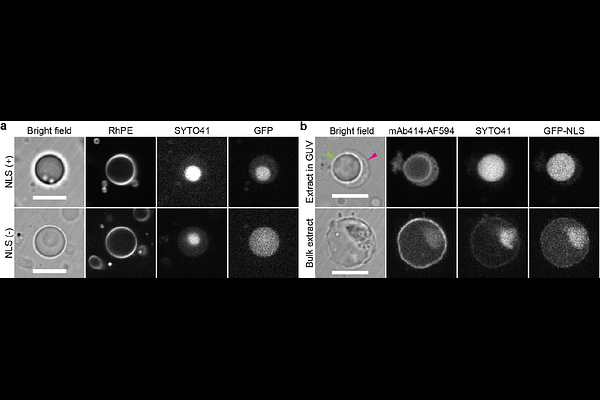Nuclear assembly in giant unilamellar vesicles encapsulating Xenopus egg extract

Nuclear assembly in giant unilamellar vesicles encapsulating Xenopus egg extract
Takamori, S.; Mimura, H.; Osaki, T.; Kondo, T.; Shintomi, M.; Shintomi, K.; Ohsugi, M.; Takeuchi, S.
AbstractThe reconstitution of a cell nucleus in a lipid bilayer-enclosed synthetic cell makes great strides in bottom-up synthetic biology. In this study, we propose a method for assembling a nucleus in giant unilamellar vesicles (GUVs). To induce reconstitution of the nucleus, we utilise interphase egg extract of African clawed frogs Xenopus laevis, known as a biochemically controllable cell-free system capable of transforming an added sperm chromatin into a nucleus in vitro. We enhanced GUV-formation efficiency by the inverted emulsion method through incorporating prolonged waiting time and adding chloroform into lipid-dispersed oil, facilitating subsequent nuclear assembly reactions in the GUVs. Characterisation of nucleus-like structures formed in the GUVs revealed the presence of dense DNA and accumulated GFP-NLS in the structure, indicative of functional nuclear import. Immunostaining further validated the presence of nuclear pore complexes on the surfaces of these nucleus-like structures. Moreover, we observed a positive correlation between sizes of GUV and nucleus-like structure/nucleus. Our approach provides insights into nuclear assembly in lipid bilayer-enclosed cell-like confinement and becomes a platform for constructing artificial cellular systems that closely mimic eukaryotic cells.